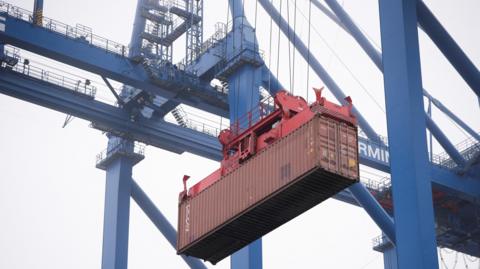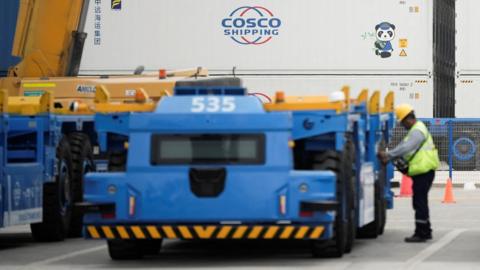Even before it opened, the $3.5bn (£2.75bn) project, masterminded by China's state-owned Cosco Shipping, had already turned a once-sleepy Peruvian fishing town into a logistical powerhouse set to transform the country's economy.
China's official Communist Party newspaper, the People's Daily, called it "a vindication of China-Peru win-win co-operation".
Peru's President Dina Boluarte was similarly enthusiastic, describing the megaport as a "nerve centre" that would provide "a point of connection to access the gigantic Asian market".
But the implications go far beyond the fortunes of one small Andean nation. Once Chancay is fully up and running, goods from Chile, Ecuador, Colombia and even Brazil are expected to pass through it on their way to Shanghai and other Asian ports.
China already has considerable appetite for the region's exports, including Brazilian soybeans and Chilean copper. Now this new port will be able to handle larger ships, as well as cutting shipping times from 35 to 23 days.
However, the new port will favour imports as well as exports. As signs grow that an influx of cheap Chinese goods bought online may be undermining domestic industry, Chile and Brazil have scrapped tax exemptions for individual customers on low-value foreign purchases.




